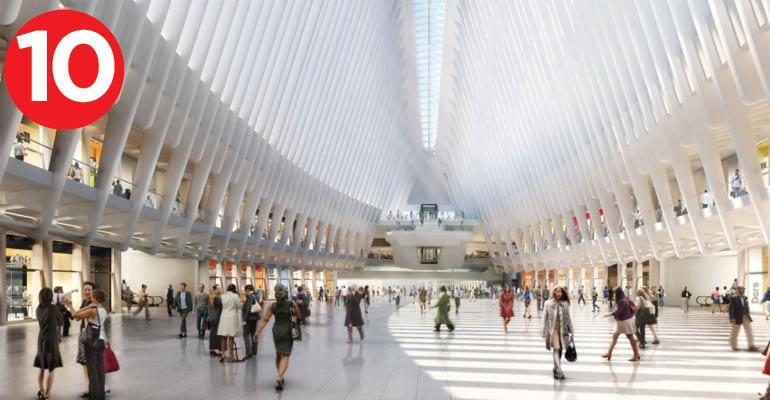- Trump Hotel Got $270K from Saudi Arabia “President Trump’s Washington hotel raked in roughly $270,000 from Saudi Arabia as part of the country’s lobbying effort against a US anti-terrorism law. The conservative Muslim kingdom hired lobbyists to fight the Justice Against Sponsors of Terrorism Act, which lets US citizens sue other governments for terrorist attacks. The lobbyists shelled out about $190,000 on lodging, $78,000 on catering and $1,600 on parking at the luxe Trump International Hotel.” (New York Post)
- When Companies Lead on Infrastructure, Taxpayers Often Bear the Cost “Whatever the advantages of giving the private sector a stake in public works — rather than leaving the government in control — experts agree that while some public-private partnerships may result in near-term savings, there is little hard evidence that they perform better over time. Whether through fees like parking meters and tolls on a road, or through government payments to the contractors, such projects are ultimately supported by taxpayers.” (The New York Times)
- Developers Lure Buyers to Cities, Even as Prices Stall “Peter Fader, a professor of marketing at the Wharton School of the University of Pennsylvania, has long yearned for the city life. For 20 years, though, he and his wife, Mina, have deferred that dream, living in a Philadelphia suburb to raise their two children in a 3,500-square-foot home. That will change this month, when the couple — with the children grown and gone — moves into a new luxury high-rise in the heart of Philadelphia. They will have expansive 11th-floor views, an easy walk to the shops, restaurants and cultural attractions of downtown and a car-free commute to work.” (The New York Times)
- Empty Storefronts Plague Westfield’s WTC Mall Nearly 1 Year After Opening “Over the Memorial Day weekend, the World Trade Center mall buzzed with tourists who crowded its stairs and peered up from the floor of the main hall to gaze upon Santiago Calatrava’s marble Oculus. But nearly a year after Westfield Corp. unveiled the long-delayed first phase of its $1.5 billion shopping complex, the World Trade Center mall remains littered with vacant storefronts.” (The Real Deal)
- ‘Madoff of Landlords’ Heads to Jail after Pleading Guilty to Fraud “Dubbed the “Bernie Madoff of landlords” by Attorney General Eric Schneiderman, Croman was charged with filing bogus paperwork to get $45 million in bank loans. He then bought up buildings with rent-regulated tenants and went on an aggressive campaign to convert the apartments into pricey market-rate units through buyouts and harassment, the AG charged.” (New York Post)
- 7 Billion-Dollar Megaprojects That Will Transform San Francisco by 2035 “Once made up of industrial warehouses and shipyards, the 303-acre waterfront area started redeveloping in the late 1990s — adding thousands of new housing units, public plazas, a state-of-the-art medical center, and 580,000 square feet of office space. And in 2019, the Chase Center, an 18,000-seat arena, will open along with a new subway stop and 100,000 square feet of retail space. It's a long-term redevelopment project for the city, and is expected to last at least two more decades.” (Business Insider)
- Bebe Avoids Bankruptcy Filing with Real Estate Deals “Bebe Stores Inc. has done what few other retailers have been able to do recently—close all of its stores without seeking bankruptcy protection. The mall-based retailer, which announced in April it would be closing all of its roughly 180 locations, was able to cut deals with its many landlords outside of a bankruptcy filing, people familiar with the matter said.” (Wall Street Journal, subscription required)
- Why More Millennials Are Finally Getting into the Real Estate Market “Here come the millennial home buyers. Finally. For the past decade, since the Great Recession forced so many Americans to put their lives on hold, the world of real estate has been praying for the arrival of millennials on the home-buying scene, to begin buying, selling, fixing up and financing property. It has been quite the waiting game.” (The Washington Post)
- LA: Affordable Housing Wanted “Rent growth in Los Angeles is continuing at a rate double the national average, largely due to solid gains in a few key employment sectors and renter interest pivoting toward the area’s suburbs. Although rents averaged $1,947 as of April, among the highest in the nation, new stock is focused on the upscale segment and affordability issues are deepening.” (Commercial Property Executive)
- Investor Demand for Senior Housing Continues to Grow in U.S. “According to CBRE's latest U.S. Seniors Housing & Care Investor Survey, investor appetite for seniors housing & care real estate continues to grow, with the majority of investors who specialize in the sector planning to increase the size of their portfolios in 2017. The 2017 survey reveals the intentions of the most influential seniors housing investors, developers, lenders and brokers throughout the U.S. Despite investors' expectations for rising interest rates, nearly 60% of respondents expect to increase the size of their portfolios in 2017 compared with 47% a year ago.” (World Property Journal)
0 comments
Hide comments

